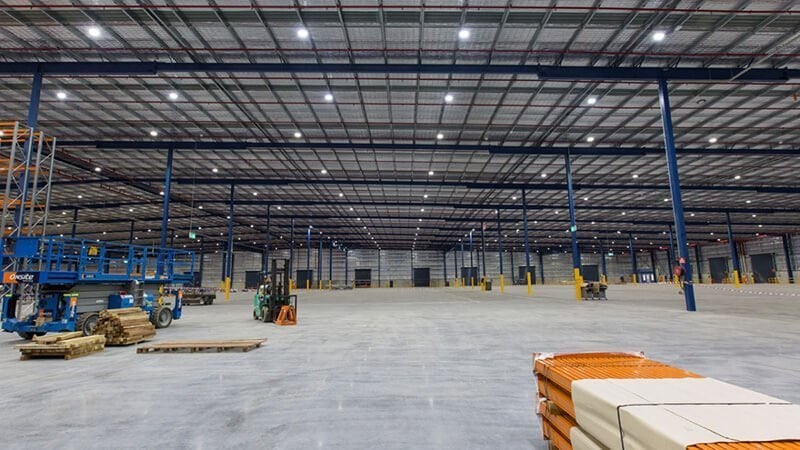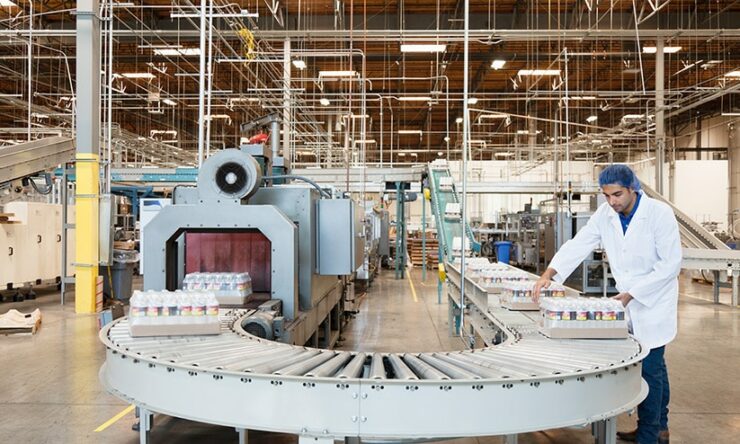Introduction
LED high bay lighting has become increasingly popular in commercial and industrial settings due to its energy efficiency, long lifespan, and superior illumination. As a professional lighting expert, it is crucial to understand the key components of LED high bay lighting, particularly lumens and wattage, to make the best decisions for your specific application. In this comprehensive guide, we will explore lumens and wattage, their importance in LED high bay lighting, and how to choose the right LED high bay light for your needs. This article is SEO friendly and includes relevant keywords such as “LED high bay lighting” to help you stay informed and competitive in the lighting industry.

High Bay Light for Workshop
Basics of Lumens and Wattage
To begin, it’s essential to define lumens and wattage and understand their relationship in LED high bay lighting.
Lumens represent the total amount of visible light emitted by a light source, which directly correlates to the perceived brightness. Higher lumens indicate a brighter light. Wattage, on the other hand, measures the power consumed by a light source, with lower wattage indicating increased energy efficiency.
The relationship between lumens and wattage is often expressed as “lumens per watt” (lm/W), which indicates the efficacy of a light source. In LED high bay lighting, higher lumens per watt signify more efficient illumination.
Importance of Lumens in LED High Bay Lighting
The lumen output of LED high bay lighting is crucial for several reasons. First, it ensures adequate brightness in high bay environments, such as warehouses, factories, and gymnasiums, where high ceilings and large spaces require powerful illumination. Industry standards often dictate specific lumen requirements to ensure workplace safety and productivity.
Furthermore, several factors can affect the lumen output of LED high bay lighting, including:
- LED chip quality: Higher-quality chips provide better lumen output and stability over time.
- Driver efficiency: Efficient drivers help maintain consistent lumen output and extend the life of the LED high bay light.
- Temperature management: Proper heat dissipation is vital for maintaining the desired lumen output, as excessive heat can decrease brightness and shorten the LED’s lifespan.
Importance of Wattage in LED High Bay Lighting
Wattage plays a significant role in LED high bay lighting due to its impact on energy efficiency and thermal management. By choosing LED high bay lights with lower wattage, businesses can benefit from lower operating costs and reduced environmental impact.
Thermal management is another critical consideration in LED high bay lighting, as excess heat can shorten the lifespan of the LEDs. High-quality LED high bay lights feature advanced heat dissipation systems, ensuring that the lights remain cool and efficient.
Compared to traditional lighting technologies such as metal halide and high-pressure sodium, LED high bay lighting offers superior energy efficiency and lower wattage without compromising on brightness.
Selecting the Right LED High Bay Light
To choose the right LED high bay light for your application, consider the following factors:
- Required lumen output: Determine the appropriate lumen output based on the dimensions of the space, the specific application, and the mounting height of the lights. Industry standards can serve as a helpful starting point, but customization may be necessary for unique applications.
- Appropriate wattage: Select LED high bay lights with the wattage that meets your energy efficiency goals and cost-effectiveness requirements. Keep in mind that utility companies often offer rebates and incentives for using energy-efficient lighting.
Conclusion
Understanding lumens and wattage in LED high bay lighting is crucial for professionals in the lighting industry. By selecting LED high bay lights with the appropriate lumen output and wattage, you can ensure optimal illumination and energy efficiency for a variety of applications. As LED technology continues to advance, the benefits of LED high bay lighting become even more apparent, making it an ideal choice for commercial and industrial settings.
In summary, lumens and wattage are two critical factors to consider when selecting LED high bay lighting. By understanding the importance of these components and choosing lights with the right balance of brightness and energy efficiency, you can provide the best lighting solutions for your clients.
As a professional in the lighting industry, staying informed about the latest trends and technologies is essential for success. As LED high bay lighting continues to gain popularity, it is crucial to adapt and grow with the evolving market. By following this comprehensive guide, you can make informed decisions about LED high bay lighting and remain at the forefront of the industry.
So, when it comes to LED high bay lighting, keep lumens and wattage in mind as you strive to provide the most efficient and effective lighting solutions for your clients. By doing so, you will not only enhance your expertise but also contribute to a more sustainable and energy-efficient world.
Remember to bookmark this blog post and share it with your colleagues, as it serves as a valuable resource for understanding lumens and wattage in LED high bay lighting. With the knowledge and expertise gained from this guide, you will be well-equipped to make informed decisions and lead the way in the ever-evolving world of LED lighting technology.


